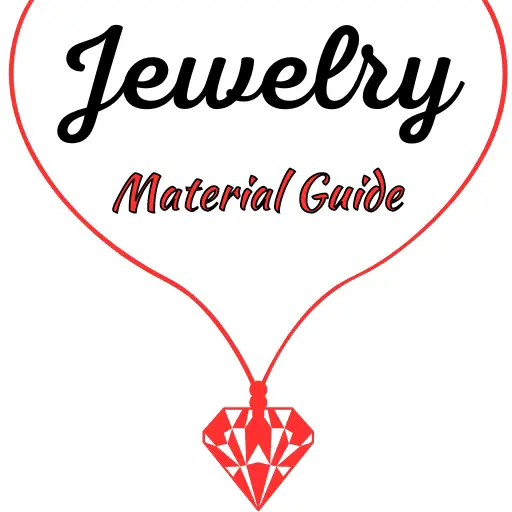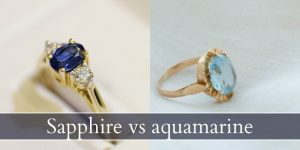Wondering what sort of cut to get for your diamond ? You’re likely already in love with the brilliant cut, a sparkling wonder and definitely a cut style that will impress. But what’s this about crushed ice ? Is it better ? does it sparkle more ? Can any diamond get a crushed ice look ? Let’s discuss this, since crushed ice is gaining more and more traction in the engagement ring circle.
Brilliant vs crushed ice
Brilliant cuts are the classic, sparkly cuts with well defined chunky fire and brilliance while crushed ice makes the sparkles much smaller, more like glitter. Crushed ice is more modern than brilliant cuts, and are most commonly applied to moissanites. An unintended effect of crushed ice is to show a lot of color, while many brilliant cuts may help you hide color in a diamond. Finally, crushed ice cuts tend to lack contrast and look a bit dull compared to brilliant cuts, which are usually very dramatic.
What is a brilliant diamond ?
Brilliant cut diamonds are a type of diamond cut that focuses on bringing as much sparkle and definition to a diamond as possible. The facets are very well aligned and clearly defined, so the diamond throws equal amounts of white and colored light. In a perfectly cut brilliant diamond there is good contrast between the dark and light areas, with medium-sized flashes of rainbow color.
The best example of a brilliant cut is the round brilliant, developed to maximize the light performance of a diamond. These are the standard diamond shape and the one you’ll most often see in in engagement rings. Other brilliant cuts are ovals, cushions, radiants, princess, pears, marquise, and trilliant.
A brilliant cut style relies on all of a diamond’s facets to reflect and refract light within the diamond, acting like tiny splintery mirrors, perfectly arranged to get just the right effect.
Read also: Morganite VS Diamond
What is a crushed ice diamond ?
Crushed ice is a type of diamond cut that is derived form the brilliant cut. It adds another set of facets on the pavilion, with the intent to make each sparkle smaller, each shard of light smaller. Crushed ice is more of a glitter effect, and is
Some brilliant cuts can have an unintended crushed ice effect, most common in the ends of an oval cut, a marquise, and the tips of a pear cut. But there are also specific cuts designed for this, the most common being the modified cushion cut, and the modified radiant coming in second.

Crushed ice is a fairly recent development in the diamond industry, but it’s become quite popular so you will have plenty of opportunities to find your dream diamond if that is what you wish. For now let’s compare the brilliant and the crushed ice styles, just to get a better feel for their differences.
Crushed ice diamonds glitter, brilliants sparkle
Perhaps the first thing you’ll notice right off the bat is that a crushed ice diamond won’t have large shards of light, its sparkle is very small and more of a subdued affair. Crushed ice is more like sprinkled glitter, while brilliants are like sequins, if you will.
The extra set of facets on the pavilion of a crushed ice cut is what makes the sparkle appear smaller. Each shard of light is cut smaller, reflected into a smaller facet, and so on.
Here’s an example, get a sheet of perfectly flat aluminum foil. Crumple it lightly in your hands and gently open it back up. All the creases in it are much like the facets of a brilliant cut. Now crumple it again, then open it again, and those creases have their own creases now. That is what a crushed ice cut does.
Brilliant diamonds may hide color, crushed ice shows color
Most brilliant cut diamonds have the ability to hide color, to a certain degree. Round brilliants are the best at doing this, with the standard cut radiants and cushions coming in second.

Meanwhile crushed ice cuts, and brilliants that have an unintended crushed ice effect, will concentrate color. So the modified cushion and modified radiant, the standard oval, standard pear, princess, and marquise will show some color. This is because the facets are smaller and aligned in such a way that the color is concentrated wherever the smaller facets are. Princess cuts, marquise, and pears also have very shallow points with very few facets, and they will concentrate color there as well.
So in short, if you want to hide a bit of color, stay away from a crushed ice cut. Both crushed ice and brilliants are very good at hiding inclusions though, so they can save you in that regard.
Crushed ice may have less fire and contrast than a brilliant
Because crushed ice cuts have more facets and smaller ones at that, they will have a different look than brilliants. Most of the time this translates to less rainbow colors, and smaller flashes of light. Think of a glittery dress vs a sequin dress. Both are beautiful but there is more contrast in a sequin dress than a glitter one, and it will come off as more dramatic.
Similarly, the smaller facets in a crushed ice diamond will lead to less contrast and less room for the rainbow colors to really stand out. You could say this can make the crushed ice look dull, or you could say it looks more elegant, more understated. Really it’s up to personal preference here but there is no denying the difference.
There is a slight downside to crushed ice cuts, and that is they can appear a bit milky or hazy if not perfectly cut. The smaller flashes of light certainly don’t help in this situation.
All that being said, there are plenty of people who love a crushed ice diamond and plenty of people who love a brilliant diamond. There is no right or wrong diamond here, just a matter of preference. The biggest difference is the way they play with light and there are fans for both versions.
Crushed ice moissanite and why it’s common
Moissanites are beautiful gems in their own way, and they definitely sparkle. But their sparkle is a bit different than that of a diamonds, because they interact with light a little differently. Moissanite has more fire (rainbow light) than brilliant (white light) and it also has a slightly higher refractive index (2.69) than diamond (2.42) which affects the overall light performance.
The result is that a moissanite cut exactly like a diamond will appear to sparkle with too much color and may appear slightly hazy. A crushed ice cut, so a set of extra facets on the pavilion, will minimize that effect by making the fire more subdued. This way a moissanite will look more like a diamond, and for some that is all that matters. There is also the hidden bonus of masking the bowtie effect when you apply a crushed ice cut to a pear/oval/marquise moissanite.
So this is why you will often see more moissanite than diamonds with a crushed ice cut. There are plenty of diamonds with a crushed ice cut, just fewer than moissanites.

I’m the main author for jewelrymaterialguide.com. I started this site after we did tons of research before our wedding and noticed that there is information about rings, jewelry, and so on that is really hard to find on the internet.






